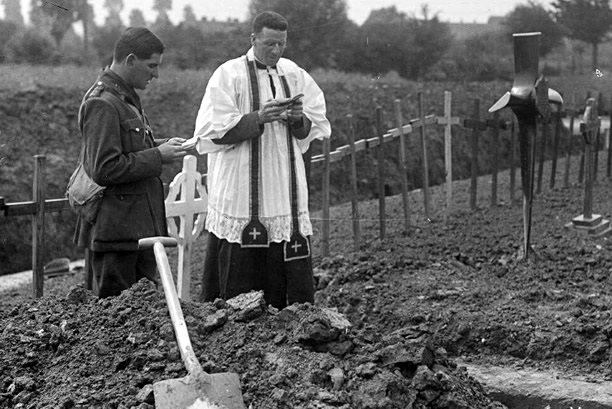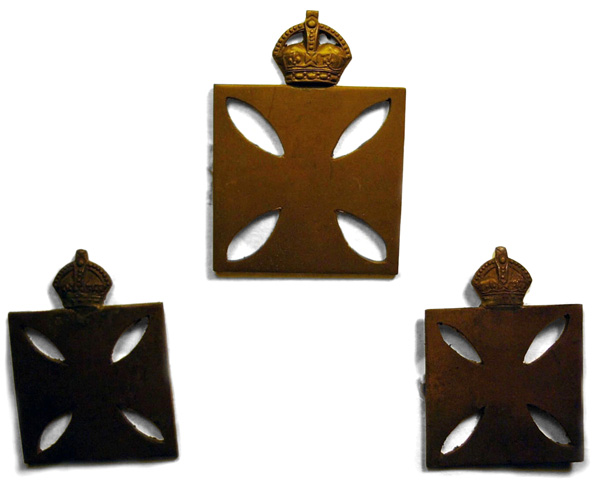
Chaplains provided spiritual support to the troops, performing church services, officiating at burials, comforting the ill and dying, and organising entertainment for the men.
Christian ministers could volunteer to serve as chaplains, whose recruitment was managed and co-ordinated by the Chaplains Department. The Defence Department attached chaplains to each departing reinforcement draft, selecting them according to the proportions of their denomination represented in that draft.
Chaplains were attached to specific military units on arrival in the war zone. Personnel files will usually indicate which unit by saying the individual was ‘Posted to …’
All chaplains were officers in the Chaplains Department and operated under military discipline:
- Chaplain-General (CG) = Major-General
- Deputy Chaplain-General (DCG) = Brigadier
- Chaplain to the Forces 1st Class (CF1) = Colonel
- Chaplain to the Forces 2nd Class (CF2) = Lieutenant-Colonel
- Chaplain to the Forces 3rd Class (CF3) = Major
- Chaplain to the Forces 4th Class (CF4) = Captain
Despite being non-combatants, they had to pass the same medical examinations as combat troops and were sent home if their physical health fell below the necessary standard.
Badges and puggaree

Cap and collar badges worn by chaplains. It is a square Maltese cross surmounted by a Crown

Puggaree (headband) worn by chaplains.
Group shot of chaplains, showing badges and puggaree: https://tiaki.natlib.govt.nz/#details=ecatalogue.480939

Community contributions